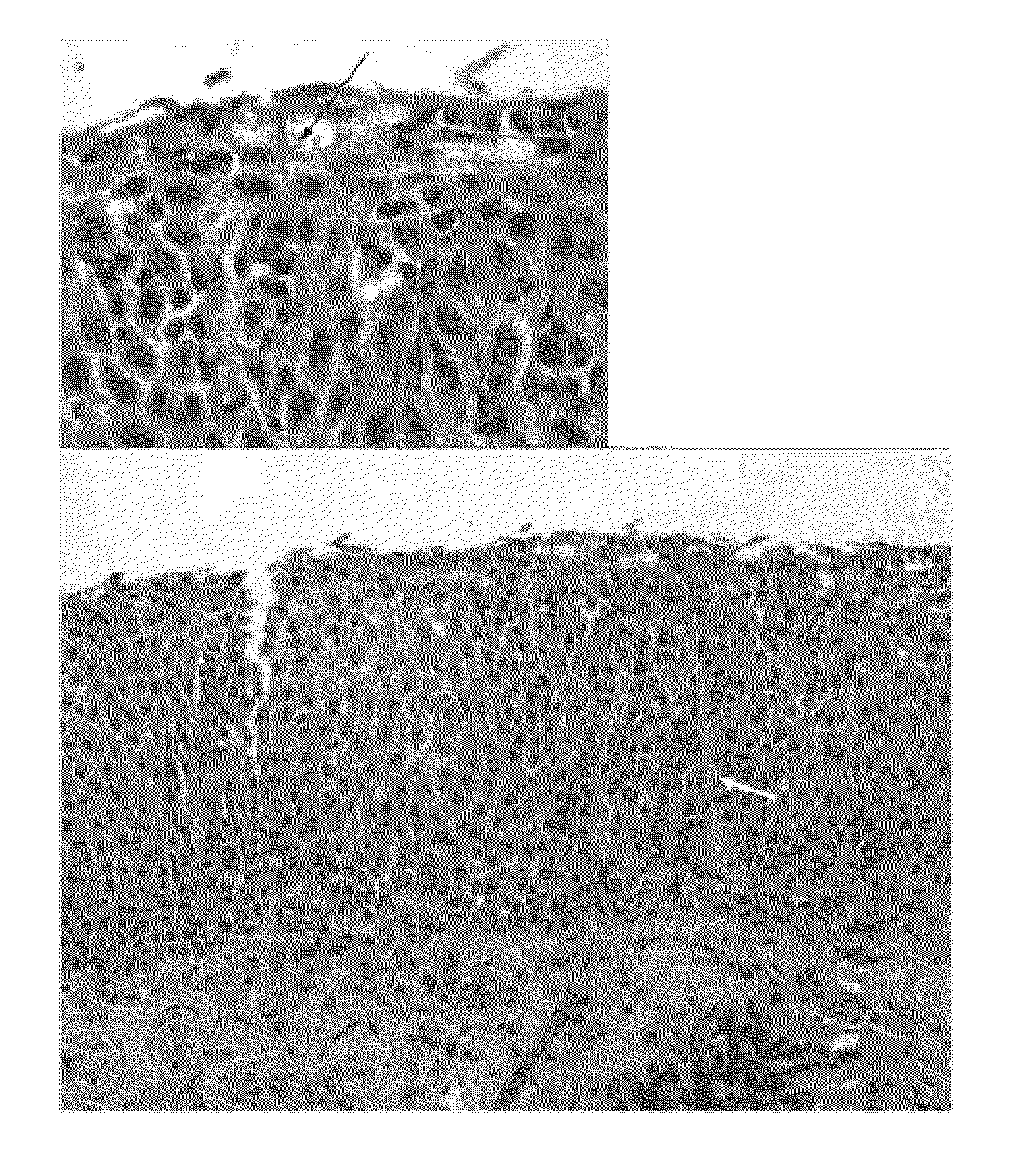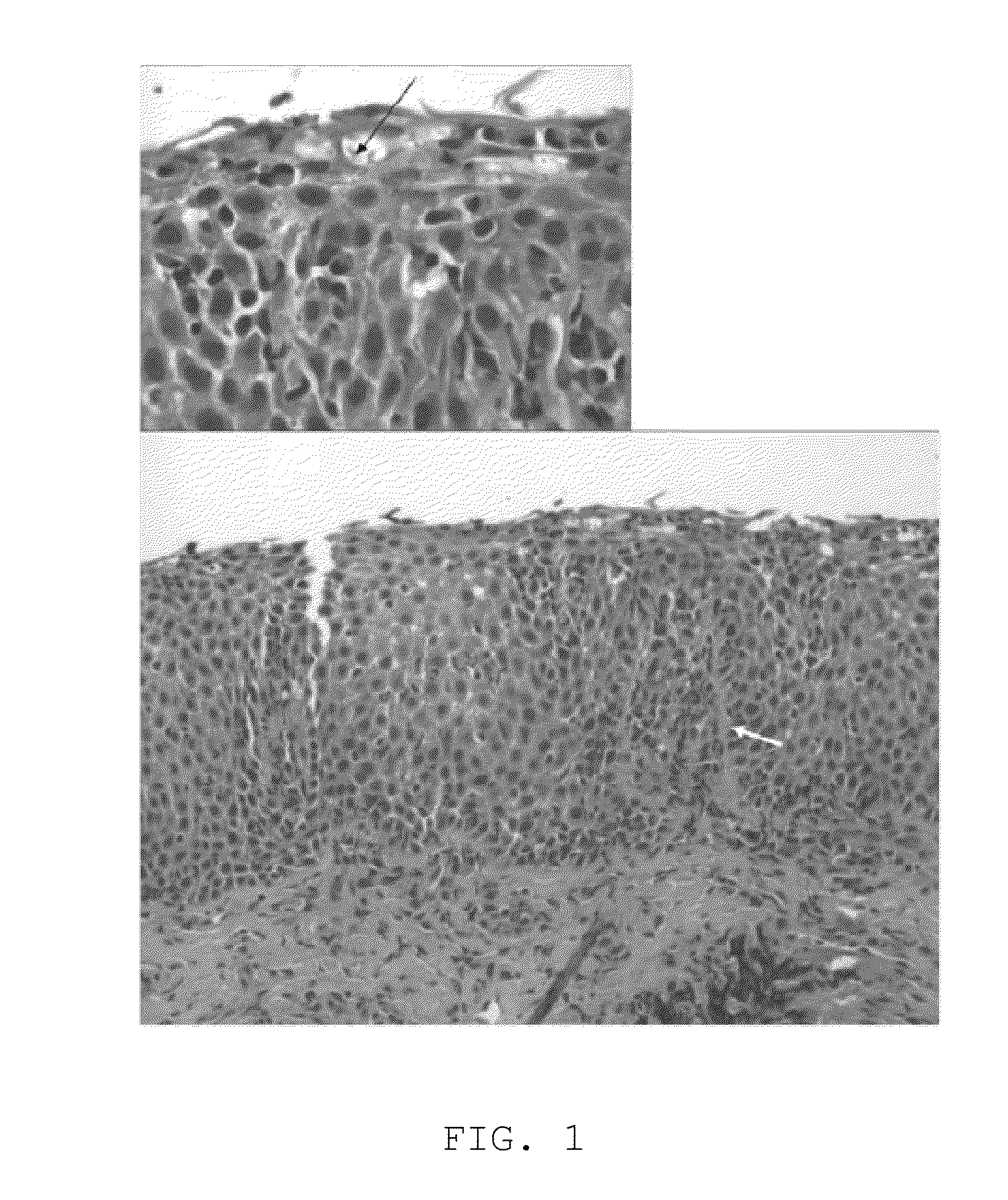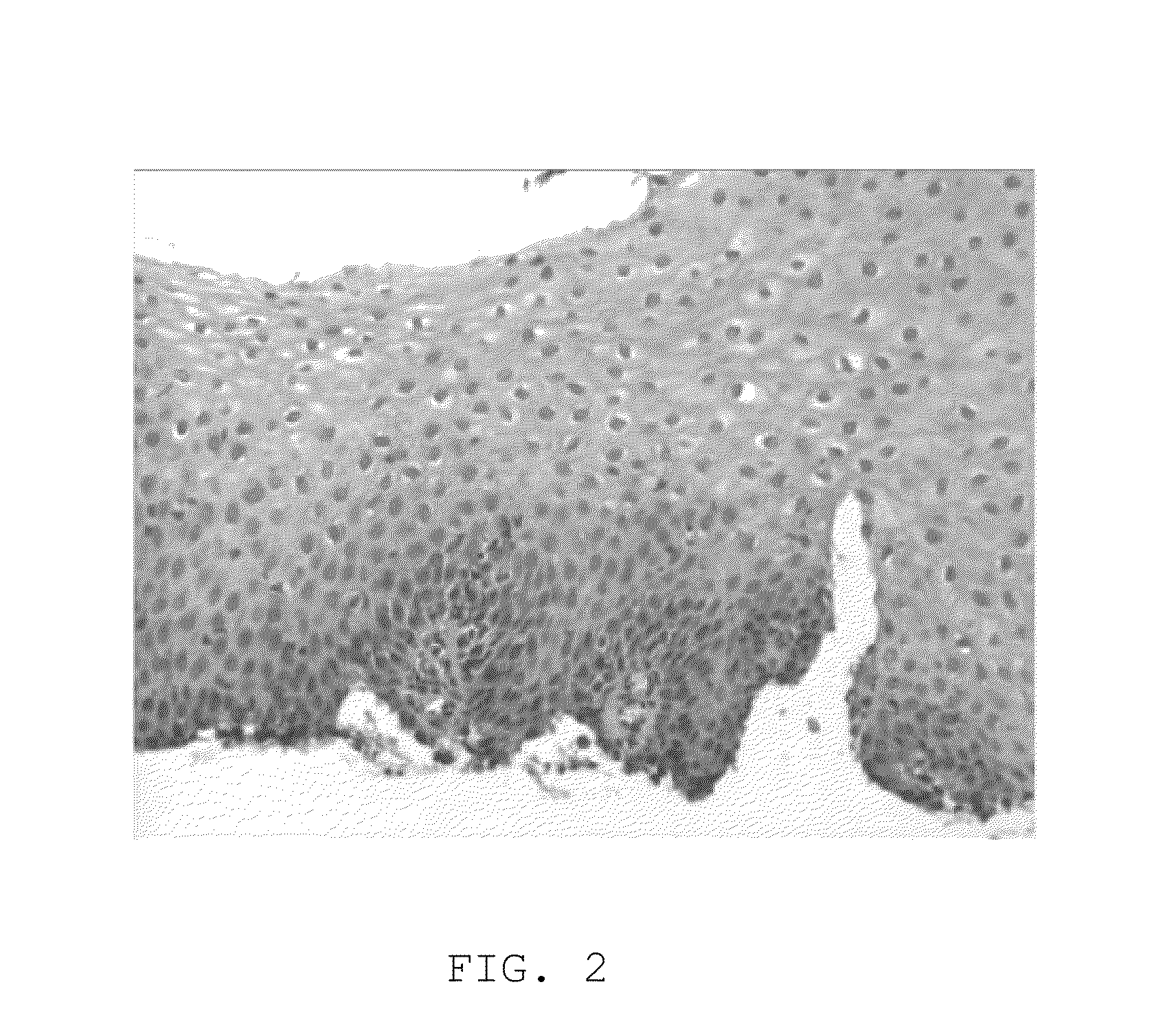Viscous budesonide for the treatment of inflammatory diseases of the gastrointestinal tract
a technology of gastrointestinal tract inflammation and viscous budesonide, which is applied in the direction of biocide, animal repellents, dispersed delivery, etc., can solve the problems of delayed treatment of patients with ee, significant secondary side effects on growth and bone development, and therapy is currently not approved for use in children, so as to prevent or alleviate esophageal inflammation and increase the viscosity of the composition
- Summary
- Abstract
- Description
- Claims
- Application Information
AI Technical Summary
Benefits of technology
Problems solved by technology
Method used
Image
Examples
example 1
[0107]Patient 1 was a 6-year-old male with a history of abdominal pain, failure to thrive, and vomiting since infancy, and developmental delay with isolated EE diagnosed in 2001. His allergic history was significant for allergic rhinitis secondary to cat, dog, and dust mite exposure as well as positive Pharmacia CAP radioallergosorbent testing for fish and milk. Following upper gastrointestinal endoscopy (EGD) with esophageal biopsies demonstrating a maximum eosinophil count of 60 per high-powered field (hpf at 400× magnification) he was diagnosed with EE and treated with oral corticosteroid (prednisone 0.5 mg per kg daily) for one month. This resulted in resolution of esophageal eosinophilia with a maximum of 2 eosinophils per hpf on repeat EGD with biopsy. He was subsequently treated with omeprazole (Prilosec®) 10 mg twice daily and fluticasone (Flovent®) 220 ug twice daily as topical esophageal therapy but repeat EGD with biopsy after 6 months demonstrated a maximum eosinophil co...
example 2
[0108]Patient 2 was a 5-year-old girl with a history of developmental delay, abdominal pain, and RAST positivity for milk, egg, and wheat. EGD showed a normal esophagus but histopathology of biopsies demonstrated maximal eosinophil counts of 40 per hpf and basal zone hyperplasia. She was placed on a hydrolyzed formula containing milk protein (Peptamen Jr®), omeprazole 10 mg twice daily and oral cromolyn (Gastrocrom®) 100 mg four times daily. Following 12 months of therapy, repeat EGD demonstrated a pale, furrowed esophagus with maximum eosinophil counts of 94, 65, and 90 per hpf and diffuse basal zone hyperplasia in the distal, mid, and proximal esophagus, respectively. She was referred to the Children's Hospital Eosinophilic Gastrointestinal Disorders clinic for further management. Subsequent skin prick testing showed a positive response to her hydrolyzed milk protein containing formula and her diet was changed to elemental formula. After two months of elemental formula and oral cr...
example 3
Multi-Patient Retrospective Review
[0109]This example details the efficacy and safety of once daily oral viscous budesonide (OVB) in inducing and maintaining remission of disease activity in children with EE. The results of this study show that in 20 children (mean age 5.5 yrs) the mean highest eosinophil count was 87 eos / hpf (range 30-170) before and 7 eos / hpf (range 0-50, p<0.0001) after therapy. There were 16 (80%) responders, 1 partial-responder and 3 non-responders. The mean symptom score fell from 4.4 to 0.8 (p<0.0001) and the mean endoscopy score from 3.6 to 0.8 (p<0.0001). No significant adverse events were reported. Morning cortisol levels were within normal limits.
Methods.
[0110]This retrospective review was approved by Children's Hospital, San Diego (CHSD) and University of California at San Diego (UCSD), Human Research Protection Program. Patients were referred from CHSD subspecialty clinics and other institutions to the EE clinic. Some patients received previous therapy w...
PUM
| Property | Measurement | Unit |
|---|---|---|
| viscosity | aaaaa | aaaaa |
| viscosity | aaaaa | aaaaa |
| diameter | aaaaa | aaaaa |
Abstract
Description
Claims
Application Information
 Login to View More
Login to View More - R&D
- Intellectual Property
- Life Sciences
- Materials
- Tech Scout
- Unparalleled Data Quality
- Higher Quality Content
- 60% Fewer Hallucinations
Browse by: Latest US Patents, China's latest patents, Technical Efficacy Thesaurus, Application Domain, Technology Topic, Popular Technical Reports.
© 2025 PatSnap. All rights reserved.Legal|Privacy policy|Modern Slavery Act Transparency Statement|Sitemap|About US| Contact US: help@patsnap.com



